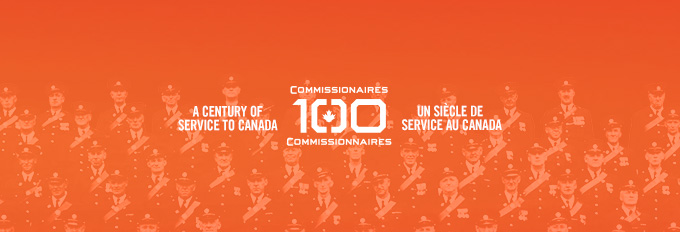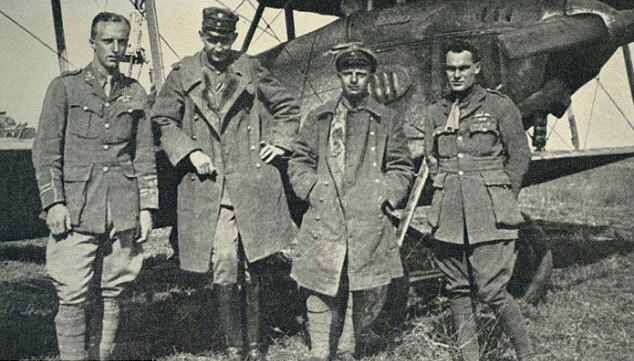
Captain Gerald Gibbs (left) and his observer pose with the German aircrew (centre) Gibbs shot down, then treated to dinner. Two weeks later, one of the Germans sent him fan mail asking for his autograph.
[ BNPS]
Theirs was a singular experience, the scale and intimacy of which were unique in the annals of conflict, even aviation, before or since. With it, a new chivalric tradition, vestiges of which persist to this day, was born.
Blazing trails in the skies in bare-bones, canvas-and-wood airplanes, they fought mano a mano, skill to skill, often just metres apart. And mostly without parachutes.
It was, after all, the first war in which aircraft played a major role—initially for reconnaissance and artillery spotting, then bombing and fighting.
As fighter squadrons were formed and aerial conflict escalated, aces who scored five victories or more emerged. Personalities emerged with them, recognizable by their distinct aircraft and markings: Richthofen in his red Fokker triplane; Bishop in his Nieuport 17; Rickenbacker with his “Hat-in-the-Ring” Nieuport 28.
Early crews of rival reconnaissance aircraft exchanged nothing more belligerent than smiles and waves. As the products of their labours—death and destruction on the ground—became evident, they began tossing grenades and even grappling hooks at each other.
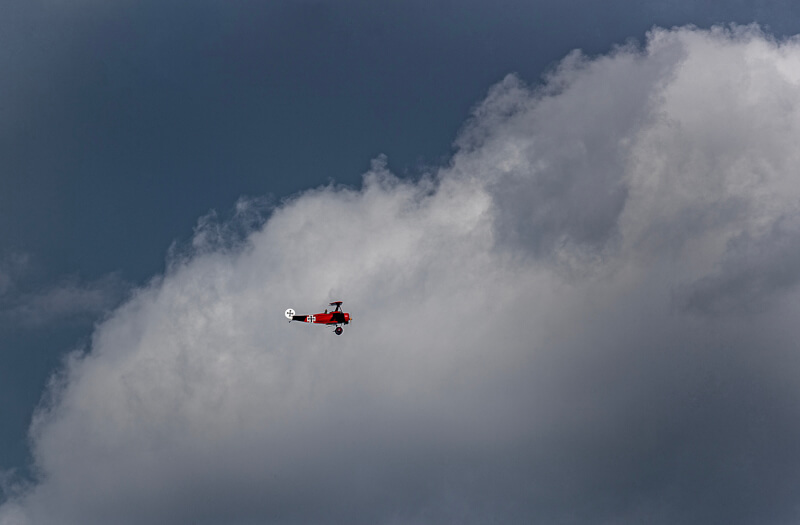
A reproduction Fokker Dr I in the livery of the legendary Red Baron, Manfred von Richthofen, putters across the skies over Gatineau, Que. This reproduction of the aircraft most associated with Germany’s renowned WW I ace is part of the collection of The Great War Flying Museum in Brampton, Ont.
[Stephen J. Thorne]
Battling freezing cold, buffeted by unpredictable winds and weather in flimsy, even delicate, airframes, and increasingly threatened by their rivals’ incursions, pilots began firing handguns at enemy aircraft. It was rarely an effective means of attack.
On Oct. 5, 1914, French pilot Louis Quenault became the first aviator to unleash machine-gun fire on an enemy plane, propelling aviation into a new era. The dogfights escalated into desperate struggles over the mud-soaked trenches and wastelands of wartime Europe, the daily stakes as high as any could be.
“Now a dogfight is rather an exciting game actually,” pilot Thomas Isbell of 41 Squadron, Royal Flying Corps, told the Imperial War Museums. “You’d dive onto the first Hun you come across, you open out your guns…and no sooner you’ve got your guns on him, someone else has got their guns on you.”
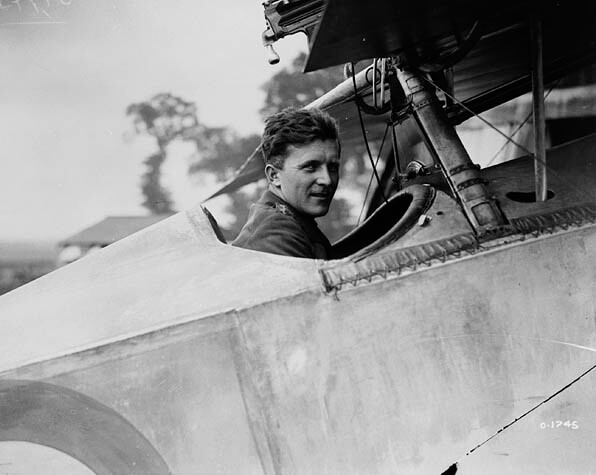
Billy Bishop sits in the cockpit of his Nieuport 17, 60th Squadron, Royal Flying Corps, in France in August 1917.
[William Rider-Rider/LAC /PA-001654]
At night, they would engage in the drunken, bittersweet celebrations and tributes to their fallen brethren, the ever-present prospect of fiery death or disfigurement lingering somewhere in the recesses of their collective consciousness, the price of a slight miscalculation, a moment’s loss of focus, or circumstances unforeseen. Over time, the underlying stress would do its work, chipping away at their psyche.
In April 1917, the RFC’s worst month, the average life expectancy of an Allied pilot on the Western Front was 69 flying hours. Denied parachutes, many ensured they had enough ammunition to hasten the inevitable.
Those who flew belonged to an exclusive club whose members quickly came to understand the special place they occupied. The rare air above 10,000 feet brought on hypoxia, a potentially fatal high, but there were no borders, or rules, up there among the clouds.
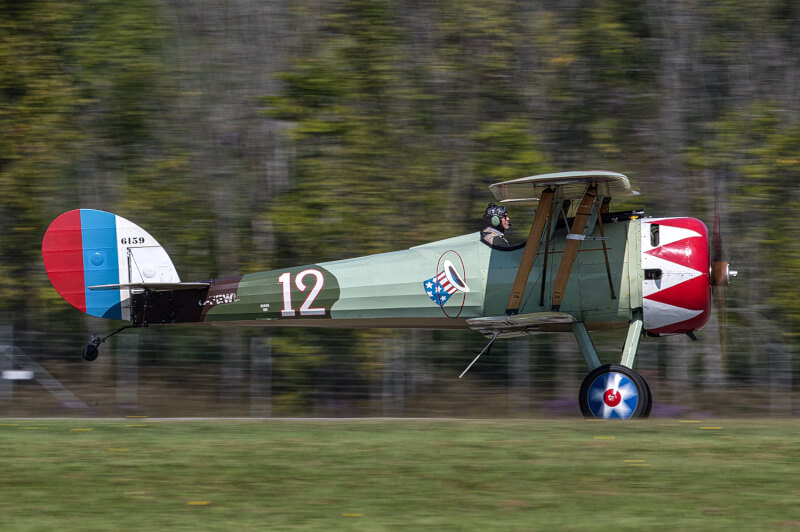
The insignia of the U.S. 94th Aero Squadron—Uncle Sam’s red, white and blue top hat going through a ring—was designed by the squadron’s aviators to symbolize the country’s entry into the First World War. This reproduction of American ace Eddie Rickenbacker’s familiar Nieuport 28 is from The Great War Flying Museum in Brampton, Ont.
[Stephen J. Thorne]
“There’s a bond between fighter pilots, even if we’re adversaries,” he says. “You see, we share the same things, the deafening noise of the engine which blots out our hearing, the speed and maneuverability of our planes, the sensation of flight, and the single purpose of defeating your opponent.
“It all comes down to one man pitted against another, high above the ground, making instant decisions that determine success or failure, and often death. There’s not enough time to think about hate.
“The enemy pilot knows my purpose is the same as his. If I hate anything…it’s the need for us to fight and kill each other.”
Indeed, opposing airmen went to astonishing lengths to help each other in the First World War, even warning the other side of where they were about to drop bombs and sending photographs of graves when they buried enemy dead.
Diaries kept by a young pilot from Pembrokeshire, England, reveal how camaraderie sometimes took precedence over hostilities, particularly between British and German flyers.
The notes taken by the 22-year-old Royal Naval Air Service pilot William David Sambrook suggest German adversaries warned their British enemies of where they planned to drop bombs.
Posted to Coudekerque airfield near Dunkirk, France, in 1916, Sambrook’s diaries tell of almost daily bombing raids on German-held aerodromes, docks and Zeppelin sheds at Bruges and Zeebrugge in Belgium.
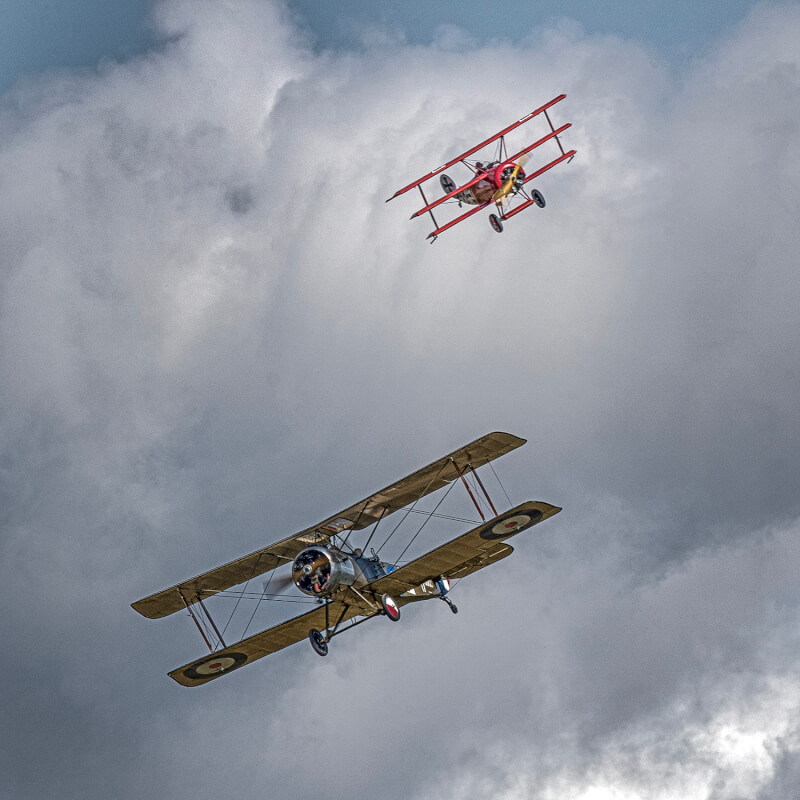
The Sopwith 1-1/2 Strutter up front is in deep doo-doo. Reproduction aircraft from The Great War Flying Museum in Brampton, Ont., perform at the Aero Gatineau-Ottawa airshow in 2018.
[Stephen J. Thorne]
A few days later, with still no confirmation of the man’s fate, another airman flew over the German airfield and dropped a message asking if they had information about the missing pilot. His British collegues received a prompt reply, also dropped from the air, confirming that the aircraft had been shot down over the sea.
“They said attempts had been made at rescue, but when the machine was brought in, the pilot was already dead,” Sambrook wrote. “He was buried with full military honours alongside two comrades at Marrakerke cemetery, Ostend. The message was accompanied by two photos of the funeral and the grave.
“There was also a message in German stating the name and place in German territory where our machines could land if they had engine trouble.” A war historian dismissed that as a shining example of German humour of the day.
Alan Wakefield, head of photographs at the Imperial War Museums, told The London Daily Mail in 2014 that such co-operation was far more common among pilots than among those fighting the war on the ground.
“I know of cases where German pilots dropped notes and photographs of a crashed aircraft and its occupant, saying they’d buried him and asking for his name so they could make a headstone,” he said.
“In one instance, a German pilot dropped a note saying he was about to bomb an airfield and suggesting that those on the ground should get out of the way.”
Captain Gerald Gibbs, a British pilot who was awarded three Military Crosses in six months, received adulatory fan mail from two German airmen whom he captured and then took to lunch. It was signed “with chummy German airman greetings.”
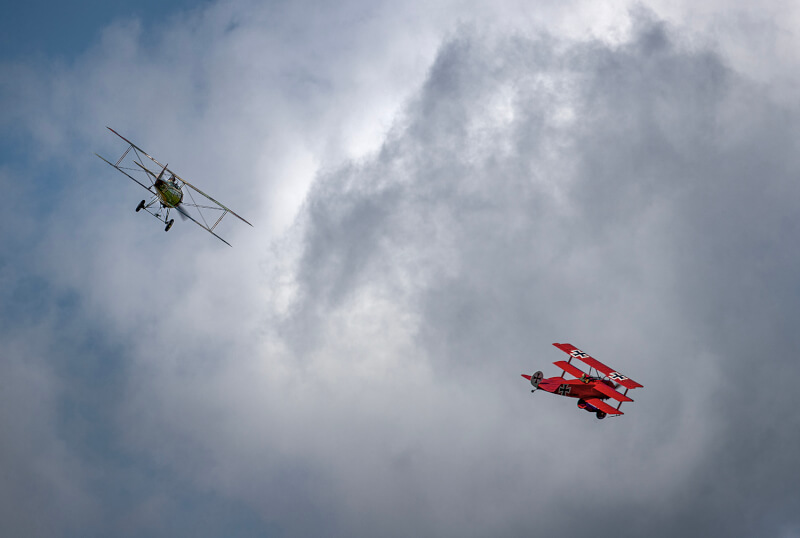
Gibbs earned the Military Cross after capturing the plane and its two-man crew by disabling its engine and forcing them to land behind British lines in Macedonia.
“I came quite close, watching the observer in case he aimed his gun in my direction, and was amazed to see he was fluttering a white handkerchief,” Gibbs wrote later.
“He landed in a pretty good field as I circled round. I then landed alongside, jumped out with my revolver. The observer threw up but the tough little egg of a pilot looked surly.
“You can imagine how excited we were to get a German aircraft down intact with two live prisoners. We gave them lunch in our mess and then handed them over rather sadly to their escort.”
In a letter penned shortly afterward in March 1918, the German observer, Lieutenant Robert Walther, said: “Dear Captain! My pilot and I ask you quite warmly, if you might have the kindness to send us a few autographed pictures. They shall be a reminder of the brave and quixotic adversary in aerial combat, as well as of the comradely picture of your battalion.
“With chummy German airman greetings, much luck, and thank you very much in advance.”
Gibbs described the note, which sold at auction in 2014 for more than $30,000, as “very nice.” It is not known whether he honoured the request, but he dropped a letter over German lines to inform the enemy the two airmen were safe.
Shot down twice, Gibbs was credited with 10 aerial victories during the Mesopotamia campaign in the Middle East. He once bombed a German aerodrome from 100 feet and strafed the hangars from 20.
Gibbs also served in the Second World War. He died in October 1992 at 96.
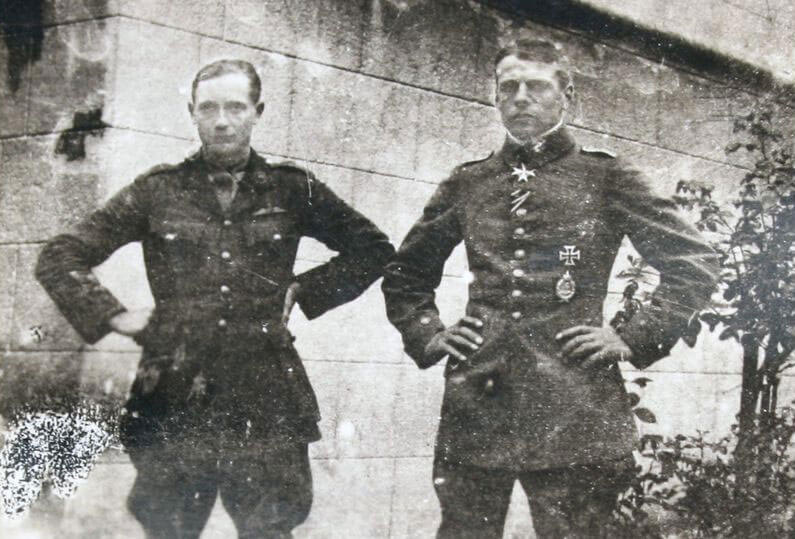
German ace Oswald Boelcke (right) shot down British Captain Robert Wilson, then took his rival for tea and a tour of his aerodrome.
[BNPS]
The Brit was Robert Wilson, a captain of 32 Squadron, RFC, who had beaten out the flames on his legs and arms after he was forced to crash-land his aircraft behind enemy lines.
Boelcke followed him down but, rather than hold him at gunpoint and send him away for interrogation, he shook Wilson’s hand, took him for coffee in the mess, and gave him a tour of his aerodrome. It was Boelcke’s 20th aerial victory.
“When he went down, his machine was wobbling badly,” the German wrote later. “But that, as he told me afterwards, was not his fault, because I had shot his elevator to pieces.
“It landed near Thiepval—it was burning when the pilot jumped out, and he beat his arms and legs about because he was on fire too.
“I fetched the Englishman I had forced to land—a certain Captain Wilson—from the prisoners clearing depot, took him to coffee in the mess and showed him our aerodrome, whereby I had a very interesting conversation with him.”
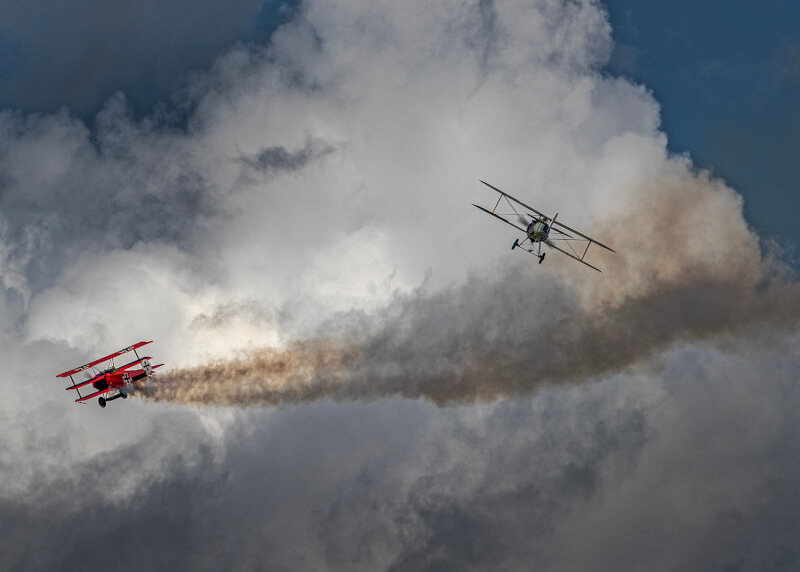
Winged Victory. At least no one’s jumping chuteless out of Richthofen’s smoking Fokker. Reproduction aircraft of The Great War Flying Museum in Brampton, Ont., perform at the Aero Gatineau-Ottawa airshow.
[Stephen J. Thorne]
After the war, Wilson described his encounter with Boelcke as “the greatest memory of my life, even though it turned out badly for me.”
A photograph of their encounter emerged in a German pilot’s photo album a century later—one of the last taken of Boelcke before he was killed in a mid-air collision with another German aircraft a month later.
“Flying in the First World War was almost like a gentleman’s club no matter which side you were on,” said Matthew Tredwin, an auctioneer who sold the album in 2016. “An unspoken camaraderie existed between Allied and German pilots.
“A lot of these men were celebrities of their time because what they did had a certain romance about it, even though it was deadly.”
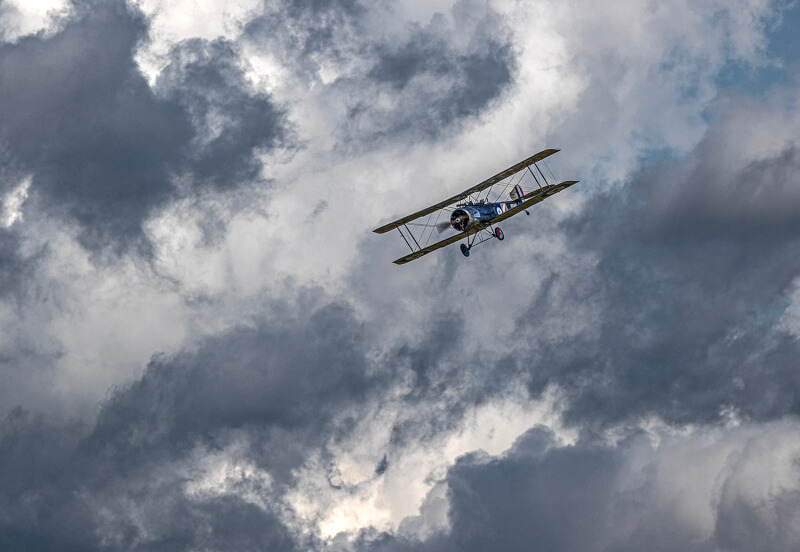
A reproduction Sopwith 1-1/2 Strutter in the colours of Flight Sub-Lieut. R.F. Redpath of the Royal Naval Air Service, part of the collection of The Great War Flying Museum in Brampton, Ont.
[Stephen J. Thorne]
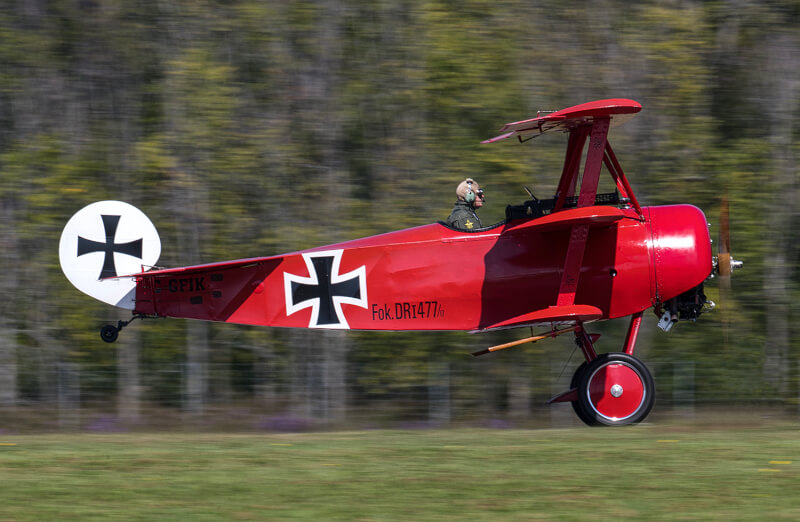
A reproduction Fokker Dr I in the livery of the legendary Red Baron, Manfred von Richthofen, takes off from the executive airport in Gatineau, Que. Thebaircraft is part of the collection of the The Great War Flying Museum in Brampton, Ont.
[Stephen J. Thorne]

Once More Unto the Breach. A reproduction Nieuport 28 from The Great War Flying Museum in Brampton, Ont., performs at the Gatineau airshow. It is done up in the Hat In the Ring colours of American WWI ace Eddie Rickenbacker.
[Stephen J. Thorne]
Advertisement






